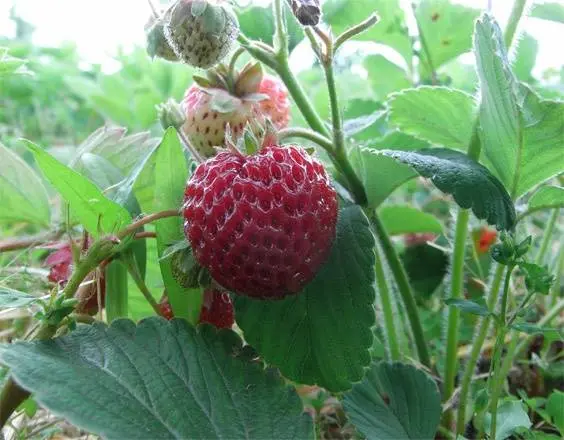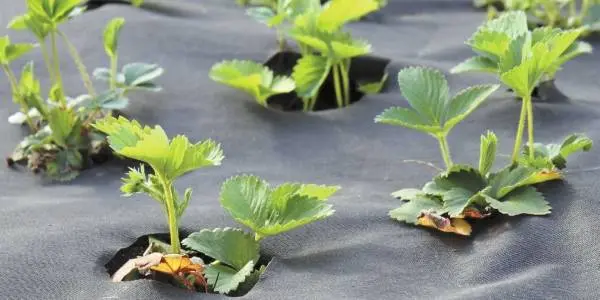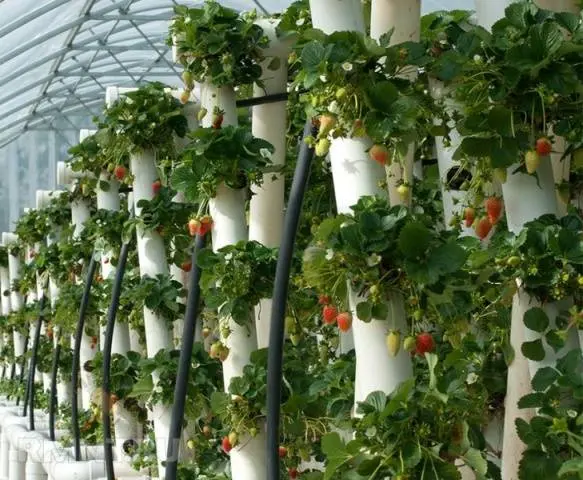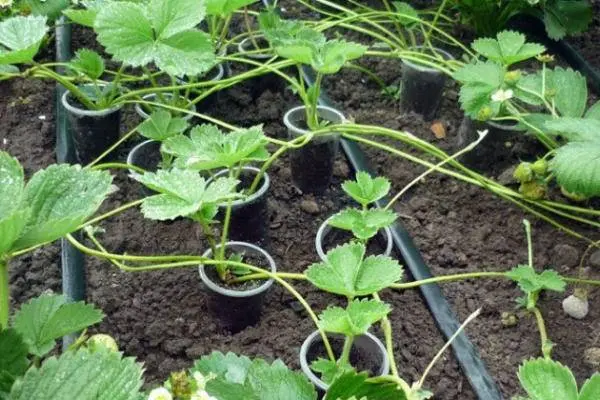Contents
Garden strawberries or strawberries, as it is commonly called, are very popular among s due to their unique taste and aroma. Among the varieties of this berry grown in home gardens and summer cottages, there are old, but time-tested varieties that still have not lost their positions. One of them is the Mitze Schindler strawberry. Read about this variety, its characteristics, advantages, method of cultivation and reproduction in this article.

Description
Mitze Schindler strawberries were obtained in Germany a little less than a century ago – in the 30s of the XX century. Her full name is Frau Mieze Schindler. The variety was bred from the then popular varieties Luciida perfecta and Johann Moller. As a result of their crossing, a late ripening strawberry was obtained, which is distinguished by drought resistance and frost resistance.
Description of Mitze Schindler’s strawberry variety and her photo:
- the bush is low, slightly leafy;
- the leaf is medium-sized, dense and smooth, its upper part is dark green, leathery, with a slight sheen, the lower part is silvery;
- peduncles moderately high, rise above the leaves, thin, branched;
- forms a lot of whiskers, on separate bushes they can be remontant;
- berries are small or medium, flattened-round, red, ripe – dark cherry, shiny;
- the weight of the first berries is 10-20 g, the average weight of the subsequent ones is 5-10 g;
- the seeds are dark red, strongly deepened into the pulp;
- the flesh is light crimson, sweet, soft, tender.
In terms of taste, this old variety is still considered one of the best today. Its yield is average (up to 0,8 kg of berries per 1 sq. m). Strawberries of this variety are mainly consumed fresh; they are less suitable for making juices, canning and freezing.

Choosing a landing place
According to the description of the Mitze Schindler strawberry variety, it is undemanding to growing conditions, grows well in almost any soil, and is resistant to major crop diseases.
For bushes of this variety, you need to find an open, sunny place on the site. The soil should be light, loose, breathable, moisture-intensive, but not waterlogged, saturated with nutrients. Strawberry does not tolerate dense and heavy soils, its root is deformed in them, cannot penetrate deeply, due to which the nutrition of the plant deteriorates and its growth stops. Sandy soil, which does not retain moisture well, is also unsuitable. It follows from this that it is not recommended to plant strawberries on clay and calcareous soils, and sandy loam and loam will be the best for it. Permissible soil acidity is slightly acidic (pH 5-6).
Legumes (peas, beans), cruciferous (cabbage, radish, radish and mustard), garlic and greens will be good predecessors for strawberries. Less suitable in this regard are nightshade and pumpkin crops. You can plant this berry after green manure: alfalfa, lupine, clover, etc. You can not plant it after sunflower and Jerusalem artichoke, as well as flowers of the ranunculus family, for example, catchment, anemones, clematis, delphinium.
Landing on the beds
Planting young strawberry plants can be carried out in early spring, as soon as it gets warmer, or in late summer – early autumn. It is undesirable to plant late spring and late autumn: poorly rooted seedlings can dry out or freeze. Immediately before planting, the bushes should be carefully examined and those that have dried roots or leaves with traces of disease should be discarded. For prevention, it is desirable to treat planting specimens with Fitosporin.
It is best to plant Mitze Schindler strawberries in the evening and in cool weather. Approximate planting pattern: 20 cm between bushes and 50 cm between rows. This feeding area allows you to get the maximum yield from each planted bush. The depth of the hole should be such that the root system of the strawberry seedling fits into it without any problems. Before dipping the bush into the hole, you need to add a little humus with wood ash to provide it with nutrition for the first time. It is necessary to deepen the seedling along the root collar. After transplanting, each plant must be watered with warm water. It is advisable to add rooting and growth stimulants, humate to it. It is better to mulch the soil around the strawberry bushes with straw, dry grass, a leaf, or cover the ground with black agrofibre.

At first, while the seedlings take root, the soil under it must be kept constantly wet: it is necessary to water daily or every other day. After rooting, the frequency of watering should be reduced.
Vertical beds
There is another option for planting strawberries – not on ordinary beds in a horizontal position, but on vertical ones. Large dense plastic bags or pieces of plastic water pipes are suitable for arranging such beds (you will need 2 pipes of different diameters, the one that is already needed for watering the plants). In bags and wide pipes, you need to make holes in a checkerboard pattern – bushes will grow in them, and in narrow pipes – many small holes through which water will penetrate to the strawberry roots. They need to be inserted into wide pipes.

You can fill bags and pipes with a ready-made substrate purchased at a vegetable grower store, mixing it with peat and perlite. For irrigation of strawberries in such containers, it is best to adapt drip irrigation.
Cultivation
Gardeners’ reviews of Mitze Schindler’s strawberries show that it is quite unpretentious and can do with standard care. Yield is not affected.
Here’s how to care for these strawberry plants:
- Water in the morning or evening with settled and warm water as soon as the earth becomes dry. It is impossible to fill strawberries, because despite the fact that she loves water, waterlogging has a bad effect on her – susceptibility to infection with rot and powdery mildew increases, winter hardiness decreases and few generative buds are laid, which leads to a decrease in yield next year. You can water manually, but it is better to install a sprinkler on the beds or lay drip irrigation hoses.
- After watering or past heavy rain, loosen the soil (if there is no mulch). Loosening will not only prevent weeds from growing, whose presence next to strawberries is unacceptable, but will also prevent the formation of a crust that does not let air through to the roots.
- Plants can be fertilized with organic matter (mullein, bird droppings, nettle infusion) or mineral complex fertilizers intended for berry crops.
- Treat with fungicides if diseases appear and insecticides when pests appear. To protect strawberries from weevil, marigolds can be sown near the beds.
- Collect berries as they ripen on the bushes. It is not worth keeping them on the bush; overripe strawberries quickly become soft and disappear.
- In the northern regions of the Federation, bushes of this variety, despite the fact that it is considered cold-resistant, must be covered for the winter.
Mitze Schindler’s strawberries should be transplanted to a new place every 4-5 years. This will increase the yield of bushes and minimize the likelihood of diseases.

Reproduction
Adult strawberry bushes should not be kept for more than 5 years – after this age they age, deplete the soil, quickly lose productivity, and accumulate diseases. To create a vitamin berry conveyor, you can plant a new bed every year and at the same time remove the oldest one. It looks something like this:
- 1 year – new planting;
- 2nd year – strawberries of the 1st year of fruiting (with a still small harvest);
- 3 and 4 years – a productive bed;
- Year 5 – after harvesting, strawberries need to be removed and vegetables should be grown in this place the next year.
A new plot can be obtained from the whiskers, which are formed in sufficient quantities in strawberries of the Mitze Schindler variety. You need to take them from the most well-developed, healthy and prolific plants, on which berries ripen, in all respects characteristic of the variety. As soon as a mustache appears on the mother bush, they need to be dug in for rooting, and planted in a permanent place in the fall.

Review and video
Mitze Schindler’s strawberry variety has long been known to gardeners, so there is no need to wait for reviews about it.
Conclusion
Mitze Schindler is an excellent strawberry variety that can be recommended for breeding to any gardener. It has the main characteristics that are valued in this culture, so it will not disappoint its new owner.









